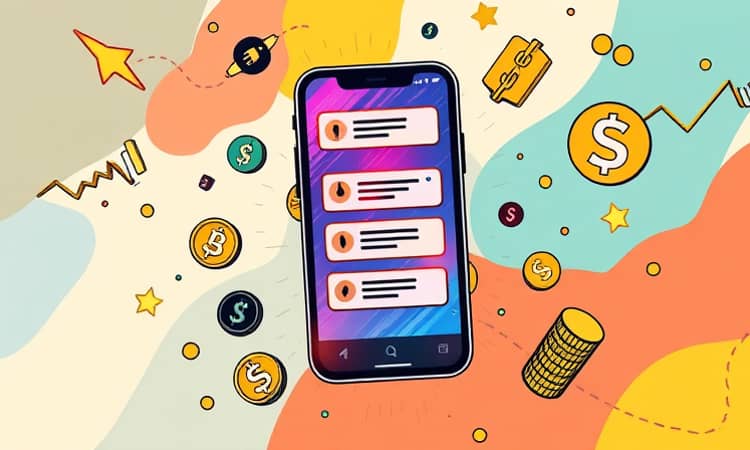In an era where every second counts, push notifications have become indispensable for finance apps and personal budgeting tools alike. By delivering real-time updates and essential reminders at a glance, they empower users to maintain control over spending, savings, and investments without constantly checking their devices. This channel offers a unique opportunity to foster trust, encourage healthy financial behaviors, and ultimately drive deeper engagement. When executed thoughtfully, push notifications can transform how individuals interact with their money and reshape the user experience.
Role and Importance of Push Notifications in Finance
Push notifications serve as a direct, permission-based channel for fintech adoption and ongoing user interaction. Unlike generic emails or broad social media messages, these timely alerts reach users exactly when they need them—whether it’s a suspicious transaction, a savings milestone, or a budget threshold being crossed. In the finance industry, the relevance of such updates breeds reassurance, reduces friction in onboarding, and creates a continuous feedback loop that keeps users invested in their financial journey.
By leveraging push notifications, fintech companies can:
- Drive immediate user actions, such as completing onboarding steps.
- Reinforce trust and transparency with alerts on account changes.
- Deliver value-added content, including budgeting tips or investment insights.
- Celebrate financial milestones to boost user motivation.
Boosting Engagement and Conversion Rates
Strategic push campaigns not only capture attention but also drive measurable business outcomes. When combined with channels like email and in-app messages, personalized notifications can achieve up to 31% conversion rates, propelling users from casual browsers to active participants. Early engagement is especially critical: statistics show that 76% of new users convert within seven days when presented with targeted, context-aware prompts. Moreover, integrating push notifications into a multi-channel strategy can deliver a 26% uplift in first-transaction rates, while guiding users toward repeat actions enhances loyalty, with 15% of users making repeat transactions in the first week.
This multi-faceted approach underscores the value of customized content based on transaction history, spending patterns, or life events. By analyzing user behavior, apps can deliver the right message at the right time, increasing the likelihood of meaningful engagement and fostering a sense of personal connection.
Impact on User Retention and Churn
Retention is a critical performance indicator, and push-enabled users consistently outperform those who opt out. Data reveals that a single onboarding-related notification in the first week can increase retention by 71% over two months. Overall, enabling push can yield a 3-10x boost in retention, with active users nearly twice as likely to remain engaged compared to their non-opted-in peers.
Furthermore, within three months of opting in, 19.26% of users achieve 3x higher retention rates, and nearly 20.65% return to the app—evidence that push notifications can become a cornerstone of sustainable user relationships.
Optimizing Open and Click-Through Rates
Push notifications boast some of the highest open rates in digital marketing, reaching up to 90% in certain industries. Financial alerts, in particular, command user attention with open rates averaging 5.46%. Click rates hover around 10.3%, exceeding many other verticals, and roughly 28% of users who tap a notification proceed to make a purchase or complete a transaction. These impressive figures highlight the potency of a well-crafted message that offers clear value, urgency, or personalized guidance.
Improving reaction rates further hinges on advanced targeting and rich content. By including images, emojis, or concise data visualizations, notifications become more engaging, while segmentation and automation ensure users receive only the most relevant alerts. Research indicates that personalization can improve reaction rates by 400%, and advanced targeting may boost engagement by 300%.
Balancing Frequency to Prevent Churn
While the benefits of push are clear, overuse can lead to notification fatigue. Users typically prefer 2-5 notifications per week, and exceeding six alerts can provoke 46% of users to disable notifications, with 32% going as far as uninstalling the app. Even just one unsolicited weekly message can cause 10% of users to opt out and 6% to uninstall. Striking the right balance involves understanding user preferences and adjusting frequency based on engagement metrics.
By monitoring open and click rates, apps can dynamically tailor notification schedules. For instance, letting power users receive more frequent updates while offering light-touch summaries for casual users preserves engagement without overwhelming audiences. The ultimate goal is to create a push ecosystem that feels both informative and unobtrusive.
Implementing a Best Practice Framework
Effective push strategies follow a proven sequence of actions:
- Segment: Group users by behavior, demographics, or lifecycle stage.
- Personalize: Craft messages that speak directly to individual needs.
- Customize: Leverage timing and content variations for maximum impact.
- Automate: Streamline workflows with event-driven triggers.
- Analyze & Optimize: Continuously refine campaigns based on performance data.
This cycle encourages ongoing improvement, enabling finance apps to adjust to evolving user behaviors, market conditions, and emerging industry standards.
Supporting Financial Health and Long-Term Value
Beyond driving metrics, push notifications play a vital role in fostering financial well-being. Whether alerting users to savings milestones, fee changes, or upcoming bill payments, these timely nudges reinforce positive habits and reduce the risk of overspending or missed deadlines. Celebrating milestones—such as hitting a savings goal—adds an emotional element that further cements user loyalty and satisfaction.
From a business perspective, a modest 5% increase in retention can elevate a company’s value by 50%, while encouraging upsells and cross-sells through personalized product promotions boosts lifetime value. Ultimately, push notifications are not just communication tools; they are strategic levers for building deeper customer relationships and driving sustainable growth.
Conclusion
Push notifications have evolved into a cornerstone of financial engagement strategies. By combining immediacy, personalization, and strategic frequency management, fintech apps can deliver critical updates that matter most to users. When executed with care, push notifications not only improve conversion and retention rates but also empower individuals to achieve better financial health and long-term stability. Embracing this powerful channel allows businesses and consumers alike to stay informed, stay secure, and stay on top of their money.














